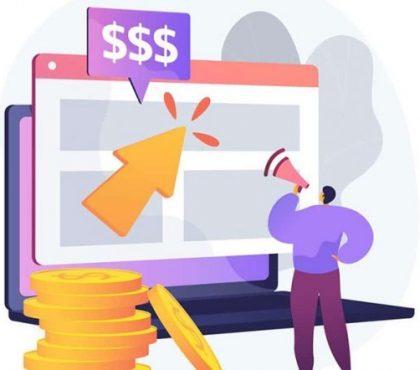What is medical animation?
Medical animation is a short educational film, explains complex medical topics via illustration and motion. Medical animation is commonly used as an instructional tool for professional training and patient education.
In the medical industry, animations are being optimized globally, and these areas of application include patient education, drug mechanism of action, surgical planning and training, cellular and molecular studies, and more. With the emergence of newer-generation healthcare companies, a need has arisen to present information in a visually appealing and informative format.
- What is medical animation?
- How well do animations work in the medical field?
- Who can utilize medical animation videos?
- Area of expertise for Medical Education Animation
- 4 Must-Know Types of Medical Animation
- Case Study: The application of 2D animation in medical education for nurses training by IntelyCare
- Conclusion
- FAQs
How well do animations work in the medical field?
Our brain is pretty much an image processor. It can memorize the visual experiences automatically before you realize what is happening. For instance, you can recall your life event, like a first kiss at prom without trying. Nevertheless, things such as texts and words you learn during your school days can be forgotten no matter how much effort you put into memorizing. Moreover, text information is much more complicated and abstract for our brains to retain and retrieve. A video or image illustrating how a machine operates is clearly much better to remember than reading about it. Audiovisual materials in learning could help people retrieve the information better and reduce their time learning. 70% of people remember what they see, compared to the 20% who remember what they read, and 10% who recall what they hear.
There are countless types of visual materials we could include in the learning courses, such as images, charts, and videos. However, in medical training, video materials could result in much better learning outcomes than mere words or static illustrations. An online experiment was conducted to test the effectiveness of animations on people with different levels of health literacy by comparing animated materials with static resources. The study shows that spoken animation is the best way to communicate complicated information regardless of the audience’s health literacy:
Suitable for a wide range of audiences
The narrated animations help learners with high heath literacy essentially know their problem. This also helps poor health literacy recall information for just as much as it does for higher health-literate individuals. Therefore, animations can assist in professional training but also well cover patient education and public awareness. It works even for patients with little or null medical understanding, or else, they have trouble understanding medical terms and problems. Of course, animations alone cannot do the trick. They need to be supported with audio and text narration.
Improve engagement
People tend to stick to information they can understand rather than tricky, complicated ones. As so, they look up for understandable knowledge more frequently to learn.
Provide a deeper understanding
Thanks to detailed visual explanations, medical knowledge that contains a lot of complex info is now easy to understand. Moreover, medical animation also provides accurate and in-depth data for the audience.
Diverse educational resources
Animation allows comprehensible descriptions of hard-to-explain data. It also makes the creation of medical figures possible; such figures include medicine as heroes and viruses as enemies… to make learning fun and enjoyable for creative educational courses.
Who can utilize medical animation videos?
The application of medical animation is broadly in:
- Patient Education
- Medical simulation
- Cellular and molecular animation
- Pharmaceutical mechanism of action
- Emergency care instruction
- Forensic reconstruction
- Electronic or Interactive learning
Therefore, there are many individuals, and teams in the health workforce that can benefit from the application of medical animation videos, these individuals include:
- Doctors and surgeons
- Medical students and interns
- College professors
- Hospitals and clinics
- Pharmaceutical companies
- Drug stores
- Biotechnical organizations
- NGOs
- Medical training course builders
and many other medical-related organizations.
Recommend reading:
Seeking ways to explain your medical concepts to mass audience? Then this Handbook is definitely yours!
E-book: Kick Start Your Medical Explainer Video
Area of expertise for Medical Education Animation
All we had before technology was the documents that were supported by medical illustrations. Nowadays, video teaching materials have made it easier for practitioners to show people the procedure instead of making them read about it. Animation in medical education would make for an effective visual aid to the traditional teaching methods of books, journals, and tutorials.
Animation contributes a huge benefit to the healthcare industry. Medical animation can convey important information to enhance communication with patients or explain abroad range of topics to medical students.
Patient education and awareness-raising
Besides the physicians, the patients also need animation in the medical field to thoroughly understand their health situations. However, this task is not easy even for experienced doctors when they need to explain complicated medical concepts to people with limited health literacy. That’s why animation in medical education is such a helpful tool that will allow patients to know their medical status.
As mentioned above, narrated animations with audio and texts could help bridge the gap between low and high literate people. They give learners – patients multi-sensory learning experiences and help them understand the concept faster. For example, a 47-second animated video could easily explain a heart attack just like any other 1000-word document.
Getting and raising public health awareness is another duty of animation in medical education. It is especially helpful and wildly applicable for preventing and teaching patients how to cope with the diseases.
Recommend reading:
Professional training
Besides serving the patients’ needs, animations can also be used in a wide range of medical fields for professional training purposes. Compared to the traditional method, medical education animation’s strengths contribute to gaining learning quality:
1. Visualize unseeable objects and knowledge vividly
Medical studies contain a large amount of knowledge, many of them are about things that cannot be seen with human eyes or are too complicated to be described by words. Take cells and molecules, for instance. Most of them are only visible under a microscope. Therefore, Cellular and Molecular Animation allow medical studies to be easier and more eloquent for researchers. This can also be used in other fields such as Medical Simulation for experiential learning, Pharmaceutical Mechanism of Action (MOA) to display how the new drug binds to cellular structures. It can even demonstrate the exact way the new drug would act, making the effect of the drug absolutely clear to the investor.
2. Deliver complicated knowledge simply and accurately
For a work that requires high accuracy and absolute attention to detail like surgery, interns take a long time to possess the skills. However, animations in Surgical Training and Planning help reduce the time they spend reading numerous thick textbooks. By explaining everything from complicated surgical procedures to pharmaceuticals’ mechanisms, interns can now have a clear way to practice. Look up things you don’t know yet in Nurse Education 2020!
For a novice in the medical field, dealing with an emergency is not easy. In those urgent circumstances, Emergency Care Instruction is a brilliant solution that could provide instructions on how to perform cardiopulmonary resuscitation. Besides, in Forensic Reconstruction, animations are very useful. They allow MRI-assisted virtual autopsy or “virtopsy” of dead remains, which are too damaged to be reconstructed.
The best characteristic of animated videos is that they could deliver complicated information in detail, especially 3D animations. 3D animations describe the medical processes with high accuracy on even those things that cannot be seen with naked eyes. Accuracy is such an important factor in medical training as it directly relates to the matter of life. When students have more practical experiences, they would have better learning outcomes when compared with just imagining the procedures in their minds. By giving them the visualized information right away, animations help learners understand the process easier, and remember all the information better.
The advantage also extends to other science subjects. For example, engineering students can benefit from educational animations that can help them easily grasp complicated mechanisms.
4 Must-Know Types of Medical Animation
1. Interactive technology
Including 3D Interactive FX and Virtual Reality, Argumentative Reality, and Mixed Reality are an immense budgeted industry with leading medical visualization advancements that provide more realistic and dimensionally experimental methods. This utilizes a lot of the newest technologies, which costs no fewer than a billion dollars in capital spending. It is fascinating and explorable. We use dome gadgets to examine this medical education field. If worn for a long time, it gets you sweaty for sure.
2. 2D animation medical education
This is a better learning material than texts when it comes to engagement and retention. It is also a more reasonable means than 3D videos in terms of pricing. The 2D animation shows the process in a less realistic way. However, it can also give learners an engaging multi-sensory learning experience, as well as 3D animation medical education. 2D medical animations transform the boring training into something much more enjoyable and funny. Plus, it saves more time than 3D medical animation. Therefore, it’s suitable for projects with a strict timeline like the medical awareness month campaign.
3. Medical Whiteboard Animation
Medical whiteboard animation uses a hand drawing medical terms on a white screen. This type of medical animation is loved by its flexibility and cost-effectiveness. Whiteboard animation not only describes medical concepts in detail but also brings a friendly vibe to the audience, especially patients.
Recommend reading:
4. 3D animation medical education
This is a must use for visualizing complicated subjects, which need accurate details like surgical training. The only drawback of 3D animations is that they require a significant amount of time and economic resources. One minute of 3D animation could cost thousands of dollars if done by a professional medical animation studio in the US-UK, and it takes about 3-5 months to finish. Then another affordable option is 2D animation.
Recommend reading:
- Best 9 2D & 3D medical animation videos that worth learning
- Top best medical animation videos in 2021
Case Study: The application of 2D animation in medical education for nurses training by IntelyCare
IntelyCare is a staffing company that provides an exceptional workforce solution for the American nurse shortage. With their proprietary scheduling system, they aim to solve this issue by allowing nurses to choose work shifts and encouraging work-life balance. They believe that when nurses are in their best state, their productivities increase.
Besides building an intelligent staffing system, IntelyCare also allows nurses to join the Educational Training program using their mobile app. However, medical training can be overwhelming for even professional nurses. F.Learning Studio addresses this issue with the application of animation in educational courses. Animated videos make their learning experiences fun yet professional with accurate information.
IntelyCare has resorted to animations as ”a way to break the traditional sense of healthcare training being long and tedious.” The script is written thoroughly to deliver the information in full context. The animation was narrated with audio and text to help nurses understand the concepts faster and easier. The medical illustrations were also designed carefully to prevent misleading information and to beautifully present the lesson in a less tense way. Get on board with the Intelycare Showreel, produced by F. Learning Studio Team!
Recommend reading:
Still too abstract? It's back to basic time with this e-book
The essential guide to medical animation
This eBook will guide you through the disciplines and principles of applying animation in the medical setting
Conclusion
Animations are a helpful visual aid to the medical field. We need something more than a plain document or illustration to deliver the information creatively. Depending on the type of medical subject and areas, we could choose to use either 2D or 3D animation in medical education. If we apply and combine those types of animated videos correctly, then the result would be a cost-efficient and cost-effective training course.
Read more:
- Top 5 healthcare video production companies you should consider (2023 Updated)
- How much does animation cost per minute? $100, $1,000 or $8,000
FAQs
1. How does medical animation improve patient understanding?
Medical animation simplifies complex information, making it easier for patients to understand their conditions and treatments through visual storytelling.
2. What are the main benefits of using animation in medical education?
Animation enhances engagement, aids memory retention, and provides a deeper understanding of complex medical concepts, making learning more accessible.
3. Who benefits from medical animation?
Medical professionals, students, and patients all benefit from medical animation as it simplifies the communication of complex medical topics.

Sean Bui, the founder and creative director of F.Learning Studio, is a respected leader in the e-learning and multimedia production industry. With over 10 years of experience, he has dedicated his career to helping organizations create engaging and impactful learning experiences.
Under his leadership, F.Learning Studio has grown into a trusted partner for organizations in the education, healthcare, and corporate training sectors, producing over 2,000 minutes of educational animation.




